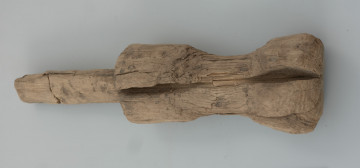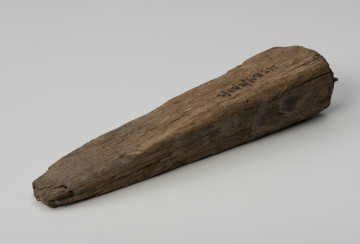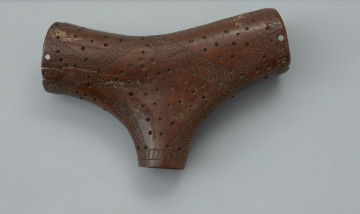
Carpentry baton
1101 — 1200
National Museum in Szczecin
Part of the collection: Middle Ages
A bone comb from the turn of the 12th - 13th century, discovered in Szczecin's Podzamcze during excavations in quarter V. The comb was made from a split animal bone, probably the long metatarsal cattle bone. Six approximately eight cm-long teeth were cut with a saw, and the surface was roughened with a knife. Above the teeth, there is a hole for hanging. The difficult-to-make object was made in a specialised workshop for working antler and bone. Combs of this type are most often interpreted as weaving combs, used for pressing warp threads to the weft on a vertical loom. Sometimes it is considered possible to use them for combing wool or flax, i.e., for pre-cleaning animal and vegetable raw material from more significant impurities before spinning, i.e., producing threads used later for making fabrics, sewing or knitting. Because of their ambiguous function, they are often referred to simply as "long combs". The chronology of the occurrence of the specific combs in the case of Szczecin is contained in the short period from the late 12th to the early 14th centuries.
Sławomir Słowiński
Other names
weaving comb
Author / creator
Dimensions
cały obiekt: height: 13 cm, width: 2.8 cm
Object type
comb, weaving equipment
Technique
grinding, drilling, carving, cutting
Creation time / dating
Creation / finding place
Owner
Muzeum Narodowe w Szczecinie
Identification number
Location / status

1101 — 1200
National Museum in Szczecin

1176 — 1200
National Museum in Szczecin

901 — 1200
National Museum in Szczecin
DISCOVER this TOPIC
National Museum in Lublin
DISCOVER this PATH
Educational path